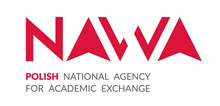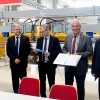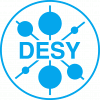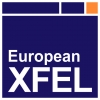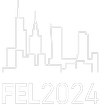NCBJ-DESY cooperation agreement prolonged
2016.07.26 11:26 - admin
 Left to right: Ewa Rondio, Maciej Chorowski, Krzysztof Kurek, Helmut Dosch, Zbigniew Gołębiewski (photo NCBJ)
Left to right: Ewa Rondio, Maciej Chorowski, Krzysztof Kurek, Helmut Dosch, Zbigniew Gołębiewski (photo NCBJ)
Agreement on prolongation of NCBJ-DESY (Deutsches Elektronen Synchrotron) cooperation was recently signed in Hamburg by Dr. Krzysztof Kurek, NCBJ Director General. Polish delegation led by Prof. Maciej Chorowski, Director of National Centre for Research & Development (who represented also during that visit Polish Ministry of Science and Higher Education) witnessed also the delivery of a next batch of elements manufactured in Poland as “in-kind” contribution to development of European Free Electron Laser (XFEL).
The agreement is a framework for mutual exchange of know-how gained at development of the European XFEL large scale research facility and its components. The project is run by European XFEL GmbH, a German law non-profit company owned in 50% by Germany represented by DESY. The remaining 50% of shares is owned by 10 other European countries, including Poland represented by NCBJ. XFEL project budget has been estimated for € 1,225.9 million. The facility is to put Europe at the leading position among users of very intense sources of X-ray radiation. XFEL and CERN are the two largest scientific projects to which Poland is currently participating. Polish contribution “in-kind” has been developed mainly by scientists/engineers working in Cracow, Wrocław, and Warszawa/Świerk.
The first elements delivered back in 2012 developed by Wrocław University of Technology, Wrocław Technology Park, and the Kriosystem S.A. Wrocław-based company included a cryogenic line for transporting liquid helium in the supercritical state and two cryostats for testing niobium superconducting resonators (some key components of XFEL electron accelerator). Value of the deliveries amounted to about € 2.1 million (2005 prices).
Institute of Nuclear Physics PAN in Cracow (IFJ) has performed tests of 816 superconducting 1.3 GHz resonators plus 100 cryo-modules (value of the works: € 11.7 million), and tests of 100 superconducting beam focussing/control magnets with current conductor subassemblies (€ 1.1 million). During the visit IFJ representatives informed Prof. Chorowski that all works to be done in IFJ for the XFEL project have been completed.
NCBJ (formerly IPJ Świerk) designed, constructed, tested and delivered to DESY 1,648 superconducting couplers of the higher (parasitic) modes in the XFEL electron accelerator, 824 HF diagnostic antennas with external lines, and 108 absorbers for propagating higher modes. Total value of the deliveries amounted to about € 3.5 million. According to the just signed agreement NCBJ is to deliver 200 electronic modules to be used to control optical lines and equipment installed in research bays; the modules will be housed in 100 cassettes. Total values of these deliveries (to be completed before spring 2017) amounts to € 741 thousand
Combined value of the Polish contribution amounts to € 26,535,060 including € 19,131,857 (2005 prices) “in-kind” and € 7,404,203 financial contribution.
“Among all eleven European XFEL GmbH shareholders Poland is the most advanced in fulfilling their obligations, 96% (by value) of the scheduled deliveries have already been accomplished” – proudly commented Prof. Chorowski – „Judging after some subsequent recently placed orders our partners have appreciated our so far made contribution. Fulfilling the orders we are acquiring new unique competences and improving our competitive edge on the high technology markets”.
Dr. Kurek added: „However, the most important aspect is that already in near future our involvement will make us a co-owner of some unique large research infrastructure, therefore a co-owner of all future discoveries and other results of experiments”.
European X-ray free electron laser will be among the largest research facilities in the world. Its electron accelerator has been deployed in a 5.8 km long tunnel routed north-west from the DESY Hamburg site. Equipment responsible for generation of coherent beams of X-ray radiation have been deployed near the end of the tunnel. Research equipment will be deployed in a hall erected at the end of the tunnel. Construction of the laser is to be finished before the end of 2016, the first delivery of the beam to the users is scheduled for mid-2017. The laser will generate 27,000 ultra-short flashes of X-rays per second. Intensity of each flash will be billion times higher than intensity of beams emitted by the most bright conventional sources of X-rays. It is expected that XFEL will enable scientists to image in detail structure of viruses (which should help to develop new medicines), to understand many of the molecular mechanisms that govern functioning of living cells, to register 3D images of various nano-objects, to film courses of chemical reactions (e.g. the processes of forming/breaking chemical bonds), to investigate processes running inside planets and stars, and to study numerous other topics from the nano-world. The laser should also significantly help to modify existing materials and to develop new ones.



